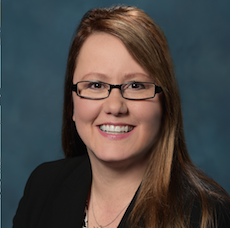
Back-to-back earnings calls Friday morning suggested a healthy future for senior living operators, as two large public healthcare real estate investment trusts relayed the growing place that senior living has in their portfolios.
In fact, both Welltower and Ventas have markedly increased the percentages of their portfolios that are in independent living, assisted living and memory care while greatly decreasing their presence on the skilled nursing side of care and services for older adults.
“Everybody wants to go where the demand is,” Ventas CEO Debra Cafaro said. “And the demand is in healthcare and senior housing. And so it is a great spot to be in.”
When it comes to residential settings for older adults, Welltower’s portfolio has gone from 40% seniors housing and 31% long-term/post-acute care in the first quarter of 2010 to 70% seniors housing and 13% long-term/post-acute care in the second quarter of 2017, according to slides that the REIT prepared for its earnings release.
Those slides indicate that Welltower and Ventas are the two largest healthcare REITs, based on enterprise value, with Welltower having more than $40 billion in gross real estate investments and Ventas having more than $36 billion in gross real estate investments. So their moves say a lot about the current state and potential future of senior living.
Cafaro said that her REIT’s portfolio has gone from 70% skilled nursing when she joined in 1999 to what will be 1% after the $700 million sale of 36 Kindred SNFs is completed by the end of the year. At that point, she said, private-pay sources will represent 94% of the REIT’s revenue.
“We are encouraged by strong demand reported by [the National Investment Center for Seniors Housing & Care] in the top 99 markets, where absorption reached almost 3% in the second quarter,” Ventas Chief Financial Officer Bob Probst said Friday. “This supports our view of the strong value proposition of seniors housing, and with our premium real estate located in high-quality markets, we are well-positioned to take advantage of the coming demographic tailwinds.’
You know all about those demographic tailwinds, with the 85+ population expected to double from 2016 to 2036 as baby boomers age and people live longer. The oldest baby boomers, turning 71 in 2017, will reach 85 in 2031; the youngest baby boomers, now turning 53, will reach 85 in 2049.
Both Ventas and Welltower said they are continuing to invest in senior living to benefit future growth.
Cafaro mentioned $188 million in investments in four Class A developments or major redevelopments involving Atria Senior Living and Sunrise Senior Living during the second quarter.
Welltower said it expanded relationships with four senior living operators in the second quarter, acquiring two communities for $49 million with Legend Senior Living, purchasing a 90-unit property with Sagora Senior Living for $24 million, investing $53 million with Brandywine Living to complete a 120-unit seniors housing property, and with Kisco, developing 60 assisted living, memory care and private-pay long-term/post-acute units as part of a private-pay, rental continuing care retirement community campus for $23 million.
It is true that both Welltower and Ventas are increasing their partnerships with academic medical centers, and both have medical office buildings and hospitals in their portfolios. But even these investments are good news senior living, Welltower CEO Thomas DeRosa said in February during a first-quarter earnings call.
“Increasingly, these systems need to see senior housing as part of effective healthcare delivery networks, because the people who live with us are the largest-risk population for those health systems,” he said. “They are seeing how our sector can help them manage that risk.”
So when it comes to residential settings for older adults, seniors housing seems to be the place to be.
Lois A. Bowers is senior editor of McKnight’s Senior Living. Follow her on Twitter at @Lois_Bowers.



